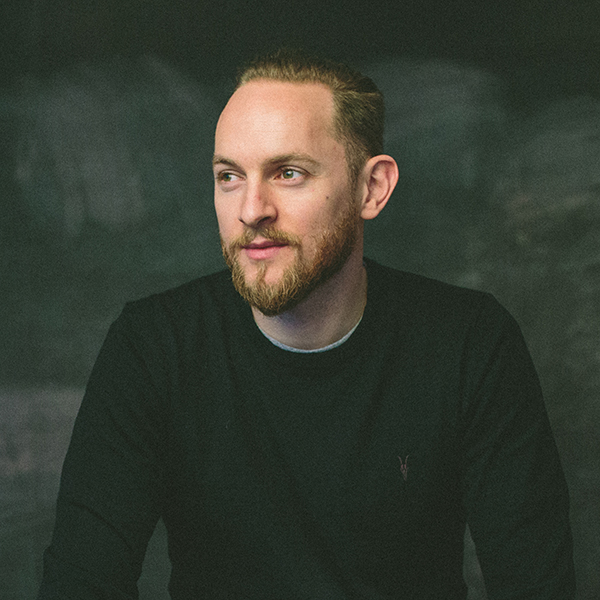Why Brands Should Not Approach Voice Like Advertising
For as long as we can remember, brands have led the conversation. Brands talked and we listened – but now consumers are in control and brands are struggling to get their customers’ attention.
Ad Blockers are on the rise and consumers are on a quest for an ad-free life with 75% of consumers finding marketing personalisation creepy and 79% of consumers feeling that they’re being tracked by retargeted ads. Consumers can simply switch off and block out advertising that they don’t want to see and marketers are beginning to catch on. P&G cut their digital ad spend by $200 million, with CMO, Mark Pritchard, highlighting the need to move away from the wasteful mass marketing we’ve been mired in for nearly a century. So, with brands struggling to reach their audience, and consumers becoming increasingly ‘ad-lergic’, what’s the answer?
Stop talking at people and start talking with them. This is where voice technology comes in. Voice is the most disruptive technology since the smartphone – 9.5 million people in the UK are using smart speakers and 72% are using digital assistants through voice technology. This innovative medium provides businesses with a new way of reaching customers – but they will only be successful if they approach it in the right way.
How should brands approach voice?
Brands should use voice to create meaningful interactions that improve, not interrupt people’s lives. It’s crucial that traditional advertising mindsets are not employed when moving into this space.
If brands use voice as another channel to advertise, interrupt and spam, they will create a bad experience, consumers will delete them and there won’t be a second chance. Additionally, it’s important to stay away from creating gimmicky PR-able experiences that consumers might use once, but never again – your budget will have been wasted and other brands will have taken your space in the market. Brands need to put the user-first by adopting design-lead thinking and understand how they can enrich or enhance consumers’ lives.
The importance of creating a value exchange
When building voice experiences there are three key considerations. The first is to identify the expertise your brand is bringing to the table – what’s the headspace that you could occupy in a consumer’s life? The second is to understand the consumers’ needs, wants and pain points. And the third is to build a service that offers value and meets those needs.
Research shows marketers are shying away from investing in voice as they struggle to sign off budget for innovation. The brilliant thing about voice is you can build an incredibly simple experience that doesn’t break the bank but is meaningful and rewarding for customers, whilst keeping your brand top of mind. However simple or detailed, the key is to assist, educate, inspire or entertain – providing the user with a useful and rewarding connection.
Take the Michael Bublé Skill on Alexa. Warner knew Bublé had a huge fan base and these fans were searching for information about him frequently, such as ‘what’s Bublé’s favorite pizza?’. Research also shows that the most common actions for voice are request and response (e.g. set a timer, play a song, answer my question). So, Warner created an incredibly simple experience where anyone with an Amazon Alexa enabled device could ask a question about Bublé at any time. Warner took a consumer need and created a moment of joy for fans that was an absolute hit.
Another example is Zyrtec who created an Alexa skill that shares a daily report on how pollen and other allergens will personally make you feel that day. Eventually through a feedback loop, it can tell you which forms of pollen make you feel the worst. The opportunity here is for Zyrtec to stay top of mind when people go to the pharmacy to buy hay fever tablets because they provided consumers with a genuinely helpful service.
In terms of a deeper experience, we recently created The Nighttime Expert, a personal assistant called ‘Liv’ for Estée Lauder. ‘Liv’ helps you build a skin care routine through asking you a series of questions to diagnose your skin and provide you with a personalized and educationally informed routine. Similarly, we worked with Nike to build Nike Coach, an assistant who trains and empowers consumers to get better at running, featuring bespoke expert advice and warm-up tips.
The aim is for consumers to come back to your experience, and for it to fill a space in their lives. When we build voice experiences, we make sure it always passes the ‘toothbrush test’, a term Larry Page coined: it ensures we always ask ourselves: is it something people will use once or twice a day? Does it make people’s lives better? Is it helpful?
Brands must earn the right to sell
It’s vital that brands don’t take the approach of sell, sell, sell. Unlike advertising, where you buy people’s attention and can spam them with your messaging on multiple channels – voice is a user-demand-led platform where people can just choose not to talk to you.
In our experience, the first focus should always be to create something of worth. For Nike Coach we built a conversational experience that helped people develop a running routine. Once we had built trust with a genuinely helpful utility, we then chose the right moment to suggest our personalized product finder that helps consumers find the right running shoe. Offering value first will reward brands with the right to suggest products at timely, personalized and relevant moments. Doing this for Nike Coach resulted in a 67% increase in conversion performance.
Test and learn
In traditional advertising, brands spend months planning all singing and dancing campaigns, to then release something complete and final. The opportunity with voice is that brands can get something out quickly, test it, learn from consumers and improve the product over time. Brands should spend 70% of their money getting an initial, light version live, and save 30% of their spend to build it out and improve it based on user responses.
Unlike with digital advertising, where all you can track are clicks – voice uses natural language which delivers a whole new pool of insights – as every interaction is a survey. The user feedback you receive through voice can help inform whether you’re building something that is actually of benefit to the customer. We recently created Dad Skills for one of our internal ‘hackweeks’, which is a voice experience that includes basic tips and tricks around nappy changing, bath-time and feeding.
We intentionally created a very simple experience in order to test the product with real Dads. The responses we received provided valuable insight into the questions Dads were asking most. These questions are informing our next design sprint so our product becomes more valuable and relevant with every iteration.
Brands spend so long trying to understand consumers – with voice, all you need to do is ask.
Looking to the future
It’s important brands don’t think of conversation in silos. It’s about identifying a user problem or behavior, building a solution, testing it and then eventually fitting it into your brand ecosystem.
One-to-one relationships are nurtured through continued, meaningful conversation. Personalization is more than adding someone’s name; it’s about giving consumers a bespoke experience and making them feel valued. These interactions should be connected, consistent and personalized across multiple channels. If you spoke to your friend on the phone and then the next day she had no memory of the conversation, it would be a bad experience. So why should it be different with brands?
The end goal is for a consumer to be able to be able to seamlessly switch between different voice and messaging platforms. In this way they could speak to Nike on Alexa in their car, before later picking up the same conversation with Nike via Messenger on their phone. Think about what touchpoints your customers have with your brand and how these interactions can link together to provide an ever-improving experience. Brands that integrate most effectively with this innovative interface and deliver relevant results will have a significant business advantage.
Your audience is there, so how can you not be?
 About the Author
About the Author
Rob Bennett is CEO of rehab, a leading creative technology company that specializes in delivering 1:1 consumer experiences for today’s premium brands. Headquartered in London, with offices in New York City, Warsaw and Los Angeles, rehab delivers emerging technology solutions and services across multiple disciplines including strategy, creative, user experience (UX), design, creative technology and development. At rehab Rob’s fresh outlook has been published in AdWeek, The Drum and Real Business. Prior to rehab, Rob worked with Samsung and oversaw the launch of their SmartThings and Connected Home products. He is a passionate advocate for moving marketing beyond the status quo of conventional advertising.









